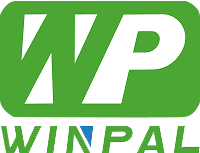UDI labels can identify medical devices through their distribution and use. The deadline for marking Class 1 and unclassified devices is coming soon.
In order to improve the traceability of medical devices, the FDA established the UDI system and implemented it in phases starting in 2014. Although the agency postponed UDI compliance for Class I and unclassified devices until September 2022, full compliance for Class II and Class III and implantable medical devices currently requires life support and life-sustaining equipment.
UDI systems require the use of unique device identifiers to mark medical devices in both human-readable (plain text) and machine-readable forms using automatic identification and data capture (AIDC) technology. These identifiers must appear on the label and packaging, and sometimes on the device itself.
Human and machine readable codes generated by (clockwise from upper left corner) thermal inkjet printer, thermal transfer overprinting machine (TTO) and UV laser [Image courtesy of Videojet]
Laser marking systems are often used to print and mark directly on medical equipment because they can produce permanent codes on many hard plastics, glass, and metals. The best printing and marking technology for a given application depends on factors including packaging substrate, equipment integration, production speed, and code requirements.
Let’s take a closer look at popular packaging options for medical devices: DuPont Tyvek and similar medical papers.
Tyvek is made of very fine and continuous virgin high-density polyethylene (HDPE) filaments. Due to its tear resistance, durability, breathability, microbial barrier and compatibility with sterilization methods, it is a popular medical device packaging material. A variety of Tyvek styles meet the mechanical strength and protection performance requirements of medical packaging. The materials are formed into pouches, bags and form-fill-seal lids.
Due to Tyvek’s texture and unique characteristics, choosing the technology to print UDI codes on it requires careful consideration. Depending on the production line settings, speed requirements and the type of Tyvek selected, three different printing and marking technologies can provide durable human and machine readable UDI compatible codes.
Thermal inkjet is a non-contact printing technology that can use certain solvent-based and water-based inks for high-speed, high-resolution printing on Tyvek 1073B, 1059B, 2Fs, and 40L. The multiple nozzles of the printer cartridge push ink droplets to produce high-resolution codes.
Multiple thermal inkjet print heads can be installed on the coil of the thermoforming machine and positioned before heat sealing to print a code on the cover coil. The print head passes through the web to encode multiple packages while matching the index rate in one pass. These systems support job information from external databases and handheld barcode scanners.
With the help of TTO technology, the digitally controlled print head precisely melts the ink on the ribbon directly onto Tyvek to print high-resolution codes and alphanumeric text. Manufacturers can integrate TTO printers into intermittent or continuous motion flexible packaging lines and ultra-fast horizontal form-fill-seal equipment. Certain ribbons made of a mixture of wax and resin have excellent adhesion, contrast and light resistance on Tyvek 1059B, 2Fs and 40L.
The working principle of the ultraviolet laser is to focus and control a beam of ultraviolet light with a series of small mirrors to produce permanent high-contrast marks, providing excellent marks on Tyvek 2F. The ultraviolet wavelength of the laser produces a color change through the photochemical reaction of the material without damaging the material. This laser technology does not require consumables such as ink or ribbon.
When choosing printing or marking technology to help meet UDI code requirements, the throughput, utilization, investment, and operating costs of your operations are all factors that need to be considered. Temperature and humidity also affect the performance of the printer or laser, so you should test your packaging and products according to your environment to help determine the best solution.
Whether you choose thermal inkjet, thermal transfer or UV laser technology, an experienced coding solution provider can guide you in choosing the best technology for UDI coding on Tyvek packaging. They can also identify and implement complex data management software to help you meet UDI’s code and traceability requirements.
The views expressed in this blog post are only those of the author and do not necessarily reflect the views of Medical Design and Outsourcing or its employees.
Subscription medical design and outsourcing. Bookmark, share and interact with leading medical design engineering journals today.
DeviceTalks is a dialogue between medical technology leaders. It is events, podcasts, webinars, and one-on-one exchanges of ideas and insights.
Medical device business magazine. MassDevice is a leading medical device news business journal that tells the story of life-saving devices.
Post time: Dec-14-2021
